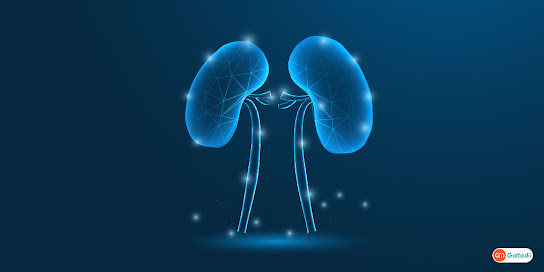The function of your kidneys is to cleanse your body by removing waste and excess fluid. Dialysis is a treatment used for people whose kidneys do not work properly. This is a common treatment that has been used since the 1940s for people with kidney problems.
Purpose of Dialysis
Properly functioning kidneys help prevent salt, excess water, and waste from accumulating in your body. It also helps control blood pressure and regulates important chemicals like sodium (salt) and potassium in the blood. When your kidneys no longer perform these functions due to disease or injury, dialysis can help purify the blood and remove waste. Kidney dialysis treatment in India has now become very common so, kidney patients can get their treatment comfortably in India.
How It Works?
There are two types of dialysis:
Hemodialysis uses an artificial kidney, known as a
hemodialyzer, to remove waste and chemicals from the blood. It reaches the
blood through a small surgical procedure in the arm or leg, or through a
plastic tube called a catheter in the neck.
Peritoneal dialysis involves the surgical implantation of a catheter
in your abdominal area. During treatment, a special fluid called dialysate is
pumped into the abdomen where it removes waste from the bloodstream.
The length of treatment depends on the patient's size, the
level of waste in their body, and whether hemodialysis or peritoneal dialysis
is used. The typical hemodialysis treatment lasts about four hours and is
needed about three times a week. Peritoneal dialysis can be done at home, at
work, or while you sleep, depending on the style of treatment recommended by
your doctor.
Most dialysis treatments are given in a hospital or doctor's
office. After spending enough time using the machines, your doctor may feel
that you are ready to perform treatments on your own at home.
Desired Benefits
The purpose of dialysis is to keep the body functioning as
normally as possible while the kidney is undergoing repair or while a person is
waiting for a kidney transplant. Without kidney function or dialysis, salts and
other waste products will accumulate in the blood and poison the person.
Dialysis is not a cure for kidney disease or diseases that affect the kidneys.
Other treatments are needed to address those concerns.
Risk
Dialysis carries many risks, although many can be avoided
with proper procedure and careful use of equipment. Risks associated with
dialysis include:
- Bleeding at Access Site
- Low Blood Pressure
- Irregular Heartbeat
- Infection
- Nausea
- Air Bubbles in Blood
There are other long-term risks associated with dialysis.
One of the most common is called dialysis dementia, which is a neurological
syndrome caused by aluminum compounds in the dialysis fluid. Symptoms of
dialysis dementia include seizures and physical and speech problems.
If you experience any of these symptoms during dialysis
treatment, notify your doctor to discuss options and ways to reduce your risk.
Dialysis Preparation
Before your first dialysis treatment, your doctor will
surgically install a tube or device to gain access to your bloodstream. This is
usually a quick operation and will allow you to return home the same day.
It is best to wear comfortable clothing that allows easy
access to your port or catheter. Follow all of your doctor's instructions,
which may include fasting for a certain amount of time before treatment.
Desired Results
Not all kidney failure is permanent. Dialysis can help the
kidneys temporarily while they repair themselves. Treatment usually continues
until the kidneys start working on their own again. However, in chronic kidney
failure, the kidneys rarely get better and dialysis is required for the rest of
your life or until kidney transplantation becomes an option.

Comments
Post a Comment